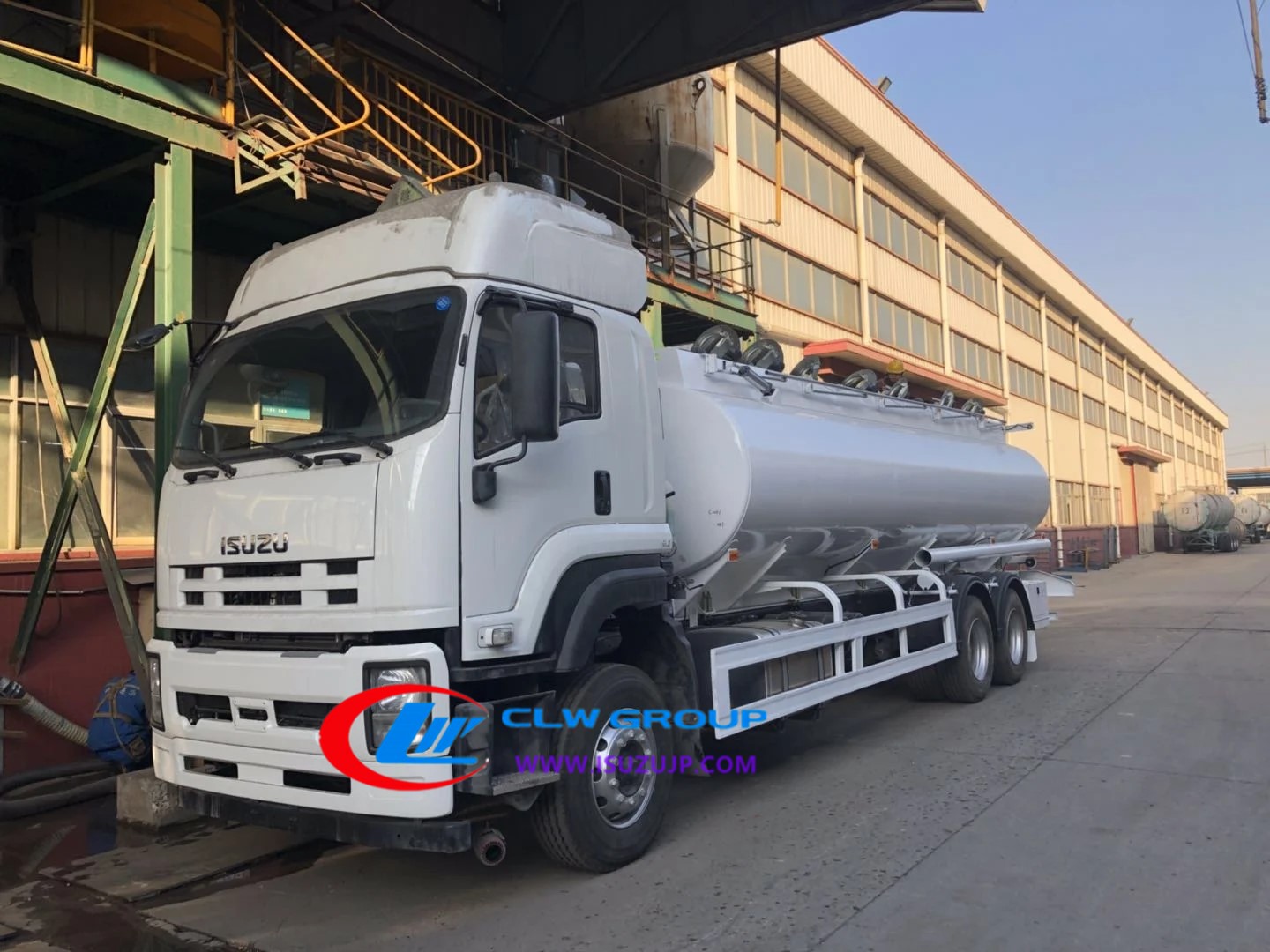What are the structural components of the diesel tanker?
What are the structural components of the diesel tanker?
- admin Reply
Diesel tanker tank steel plate thickness:
Usually, diesel tankers with less than 8 cubic meters of oil are pressed with national standard Q235 carbon steel plates, diesel tankers with more than 8 cubic meters of oil are pressed with national standard 5 mm Q235 carbon steel plates, and fuel trucks with more than 30 cubic meters of oil are pressed with national standard 6 mm Q235 carbon steel plates.

1. diesel tanker chassis:
The chassis of the refueling truck usually adopts the special chassis for refueling trucks of large automobile manufacturers such as Dongfeng, Jiefang, Foton, Shaanxi Automobile, Sinotruk, Qingling, and Jiangling.Second, the tank part:
The tank body is required to have sufficient strength. The tank body is provided with anti-shock plates, and the tank body accessories are provided with manholes, liquid outlet valves, etc. Some tanks also need to be insulated and equipped with flow meters. The tank can be divided into warehouses.3. Fuel dispenser:
The fuel dispenser is a fuel dispenser that uses the power of the car and can move with the car to meet the needs of urban or rural mobile oil sales. It has the functions of ordinary fuel dispensers, suitable for gasoline, diesel, ethanol gasoline, safe and reliable, compact structure, small size and easy to operate. Types and brands of tankers: Shanghai Seike tanker, Guangdong Hengshan tanker, Beijing Sanjin tanker, Beijing Jialijia tanker, Zhengzhou Zhengxing tanker, Zhuhai Bellin tanker, Shanghai Bole tanker.
Four, automatic return reel:
The automatic return reel is available in 10 meters, 15 meters, 18 meters and 20 meters.Five, refueling car oil pump:
The oil pump of the refueling truck is usually a self-priming pump, a gear pump, a chemical pump, a stainless steel pump, a centrifugal pump, and a heavy oil pump.6. Operating system:
The gearbox is driven by the engine, and the power take-off installed on the gearbox drives the oil pump, which generates power and pumps the liquid inside the tank in or out through the pipe network.Seven, fire extinguisher:
Usually the refueling truck carries 2 sodium bicarbonate dry powder fire extinguishers.Eight, breathing valve:
The breathing valve is a ventilation device fixed on the top of the tank to ensure the normal state of the pressure in the tank, prevent the tank from being damaged by overpressure or vacuum in the tank, and also reduce the volatilization loss of the liquid in the tank.Nine, fire cover:
Automobile fire shields are usually vortex valve type structures, which are directly connected to the tailpipe of the automobile exhaust pipe by a four-bar mechanism without any tools. There is no need to switch or connect fixing screws. The operation is simple and fast, and the installation and disassembly can be completed in a few seconds. In places where the ignition point of the flammable product is relatively low and the concentration is high, it can completely extinguish the sparks entrained in the exhaust gas of the automobile exhaust pipe.10. Anti-static facilities
The anti-static facilities on the refueling truck are mainly divided into two types: electrostatic wires and electrostatic grounding wires.⒈ Before loading and unloading oil, the tank truck and the oil loading and unloading equipment should be bridged together with electrostatic cables (the oil depots are equipped with electrostatic cables that are bridged with the tank trucks). The functions are: ① Conduct the static electricity induced by the oil tank to avoid flashover with external substances; ② Keep the tank truck and the entire oil loading and unloading equipment at the same potential to prevent potential difference; ③ Accelerate the leakage of the electric charge in the oil. . When connecting the electrostatic wire, be sure to select a rust-free and exposed metal part on the tanker, and it cannot be connected to a place with severe rust or paint.
The data shows that only when the resistance of the entire electrostatic grounding system is less than 10 ohms can good electrostatic conductivity be achieved. The ideal way is to install a special copper connection board in a certain part of the tanker, which is specially used for connecting electrostatic wires.
In addition, the electrostatic grounding wire on the oil tanker cannot be used as the electrostatic wire for loading and unloading oil. The reason is that the oil tanker is generally parked on cement ground or hard ground during oil loading and unloading, and the resistance of the electrostatic grounding wire is not high. It may be less than 10 ohms, so it is difficult to ensure that the equipotential is maintained with the loading and unloading equipment.
⒉Electrostatic grounding wire has two types: chain type and conductive rubber support belt. The former is prone to sparks due to the impact of mopping the ground, the connection is intermittent when grounded, and the easy rust will increase the leakage resistance. The electrostatic grounding wire should be adjusted frequently to ensure that it has good contact with the ground, and a multimeter should be used to check whether it is smooth and whether it is broken, and replace it in time if any problems are found.
August 8, 2022 2:29 pm No comments
Related question
-
What are the advantages of oil tanker truck?
August 8, 2022 2:41 pm 1 1297
-
What are the uses of fuel trucks?
August 8, 2022 1:48 pm 1 1195
-
What is the difference between a refueling truck truck and a fuel tanker?
August 8, 2022 1:56 pm 1 1290
-
How much does a small fuel dispenser truck cost and what are the configurations?
August 8, 2022 2:22 pm 2 1054
Home » What are the structural components of the diesel tanker?


Comments are closed.